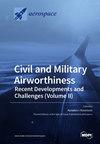考虑到微观-繁荣相互作用的关节表面接触刚度模型
IF 2.1
3区 工程技术
Q2 ENGINEERING, AEROSPACE
引用次数: 0
摘要
机械连接界面广泛存在于机械设备中,其接触刚度直接影响机械系统的整体性能。基于分形和弹塑性接触力学理论,引入 K-E 弹塑性接触模型,建立了机械连接界面的接触刚度模型。该模型考虑了在完全变形状态下,包括弹性、第一弹塑性、第二弹塑性和完全塑性变形状态下,微观性能之间的相互作用效应。基于该模型,分析了分形参数对法向接触刚度和接触载荷的影响。结果发现,分形维数 D 越大或特征尺度系数 G 越小,微孔之间的相互作用就越弱。加工表面越光滑,机械连接界面的接触刚度就越高。通过与传统接触模型计算结果的比较,验证了所提模型的适用性和有效性。在相同载荷下,微粗糙表面之间的相互作用会导致整体变形和接触刚度的增加。通过与实验结果进行比较,还验证了预测接触刚度模型的准确性。本文章由计算机程序翻译,如有差异,请以英文原文为准。
A Joint Surface Contact Stiffness Model Considering Micro-Asperity Interaction
Mechanical joint interfaces are widely found in mechanical equipment, and their contact stiffness directly affects the overall performance of the mechanical system. Based on the fractal and elastoplastic contact mechanics theories, the K-E elastoplastic contact model is introduced to establish the contact stiffness model for mechanical joint interfaces. This model considers the interaction effects between micro-asperities in the fully deformed state, including elasticity, first elastoplasticity, second elastoplasticity, and complete plastic deformation state. Based on this model, the effects of fractal parameters on normal contact stiffness and contact load are analyzed. It can be found that the larger fractal dimension D or smaller characteristic scale coefficient G will weaken the interaction between micro-asperities. The smoother processing surfaces lead to higher contact stiffness in mechanical joint interfaces. The applicability and effectiveness of the proposed model are verified by comparing it with the traditional contact model calculation results. Under the same load, the interaction between micro-rough surfaces leads to an increase in both overall deformation and contact stiffness. The accuracy of the predicted contact stiffness model is also validated by comparing it with experimental results.
求助全文
通过发布文献求助,成功后即可免费获取论文全文。
去求助
来源期刊

Aerospace
ENGINEERING, AEROSPACE-
CiteScore
3.40
自引率
23.10%
发文量
661
审稿时长
6 weeks
期刊介绍:
Aerospace is a multidisciplinary science inviting submissions on, but not limited to, the following subject areas: aerodynamics computational fluid dynamics fluid-structure interaction flight mechanics plasmas research instrumentation test facilities environment material science structural analysis thermophysics and heat transfer thermal-structure interaction aeroacoustics optics electromagnetism and radar propulsion power generation and conversion fuels and propellants combustion multidisciplinary design optimization software engineering data analysis signal and image processing artificial intelligence aerospace vehicles'' operation, control and maintenance risk and reliability human factors human-automation interaction airline operations and management air traffic management airport design meteorology space exploration multi-physics interaction.
 求助内容:
求助内容: 应助结果提醒方式:
应助结果提醒方式:


